If you are like most people, you have had someone tell you to sit or stand up straight — probably during your teenage years. At the time, the demand was probably annoying and one you did your best to ignore. But it turns out that good posture is important for more than just looking confident and respectable. Sitting and standing with good spinal alignment can help prevent back pain.
One major focus of physical therapy is to teach patients how to practice good posture. Your physical therapist can help you understand the importance of posture and give you valuable training to help you achieve it, day in and day out.
Let us help you discover the benefits of physical therapy for back pain. Please contact us today to schedule an appointment with a physical therapist!
Good Posture — What It Does to Relieve Back Pain
Your spine is designed to operate in a certain way. When you move, sit and stand in ways that disrupt the correct operation of your spine, you can create problems over time. Practicing good posture — with the help of your physical therapist — is one way that can work with your spine to minimize back pain.
When you are in physical therapy, you will learn good posture and discover several ways in which the healthy movement patterns taught by your physical therapist will minimize your back pain. These include:
Avoid Undesirable Anatomical Changes
The ways that you use your spine can actually cause changes in your anatomy. The stress caused by sitting hunched can eventually lead to damage of your spinal discs, muscles, joints and the nerves and blood vessels traveling through your spine. Many times the damage can be reversed, though, if you engage in targeted physical therapy and learn to sit and stand correctly from your physical therapist.
Promote Good Circulation
When you maintain proper spinal alignment, your veins are not constricted by the press of your vertebrae. All of the numerous components of your spine require good circulation to operate correctly and to regenerate from damage and wear and tear.
When your physical therapist guides you through the different physical therapy exercises that help with posture, you will get better at keeping the alignment required for optimal circulation.
Encourage Strength and Flexibility
If it has been a while since you have regularly had good posture, chances are that trying to maintain such posture over a long period will be difficult. It may take some time in physical therapy to gain the strength and flexibility necessary to keep the ideal posture.
Fortunately, the work you do with your physical therapist to achieve your goal will lead to greater overall fitness. The stronger and more flexible you get, the less likely you are to suffer from back pain on a regular basis.
Improved Posture in all Activities
Most people think of posture in static positions, like sitting at a desk or standing for a period of time. But good posture is important in everything that we do.
In physical therapy, your physical therapist can instruct you on how to maintain good posture during all of your favorite activities, such as running, playing sports, and walking. The improved posture you adopt in each activity will lessen the wear and tear you put on your spine, which minimizes the risk of developing back pain from these activities.
Prevent Back Pain Caused by Improper Lifting
Good posture is a vital component of lifting objects without injury. When you lift and fail to use good posture, there is a much greater chance that you will wind up hurting your back.
Ask your physical therapist about proper lifting posture. He or she can show you how to lift correctly and guide you through some exercises to clarify the right posture.
Help With Your Back Pain
If you are suffering from back pain, please contact us. Our physical therapy team can help you get the relief you deserve!

